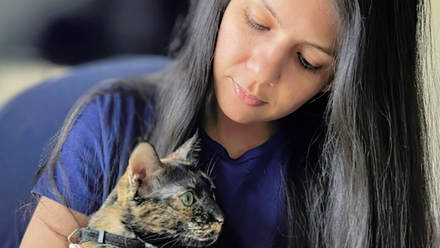National Pet Month - How to ensure a smooth move for our senior pets
When it’s time to move to a new home, there are a few simple, but effective steps you can take so your senior pet can adapt to their new environment.
Step 1: Create a calm and safe environment
Moving to a new place can be overwhelming for an older pet.
So, ensuring your home is as peaceful and free from loud noises as possible in those early days, can make such a difference.
If you can, create a quiet area where your pet can retreat and feel safe and secure. Include their familiar things like a bed, toys and blankets, as well as water and food bowls.
Using calming diffusers, available from your local vet or pet store, can also help.
Step 2: Establish a consistent routine
Our pets thrive on routines, so set regular feeding, walks, play and rest times. It will help reduce anxiety and help your companion adjust to their new home.
Step 3: Introduce your new home gradually
Give your pet access to one or two rooms initially to let them settle in. As they become more comfortable with their new surroundings, introduce them to other areas of the house.
This stops overwhelm and will allow them to adjust at their own pace.
Step 4: Monitor their health and comfort
An older pet may have health issues that require attention. So, if necessary, schedule a vet check up.
Make sure their bedding is still comfy and suitable. You may want to consider using ramps or non-slip mats if your older animal has mobility issues.
Step 5: Continue to provide mental and physical exercise for your senior pet
Introduce activities suitable for your pet’s age and health.
Short walks, gentle play and interactive toys can all make a positive difference to your animal’s wellbeing.
Training sessions are a great way of keeping them physically and mentally active, but they can also help strengthen the human-animal bond.
Step 6: Be patient and observe
It can take time for an older pet to adapt to a new home, so don’t rush things.
Be patient and look out for signs of stress or discomfort.
Reassure your animal companion gently, but don’t force interactions.
Let them adjust at their own pace, remembering that every pet is different.
By taking these simple steps, not only are you welcoming a pet into your new home, you’re building a strong bond of trust and companionship.
Our seniors deserve a place to call home, just like their younger counterparts.
With your love and care, they’ll be able to relax, settle in and make the most of their twilight years.
Do you share your home with a senior pet? Tell us about them. Post a pic on social, tag us in and let’s celebrate them.






